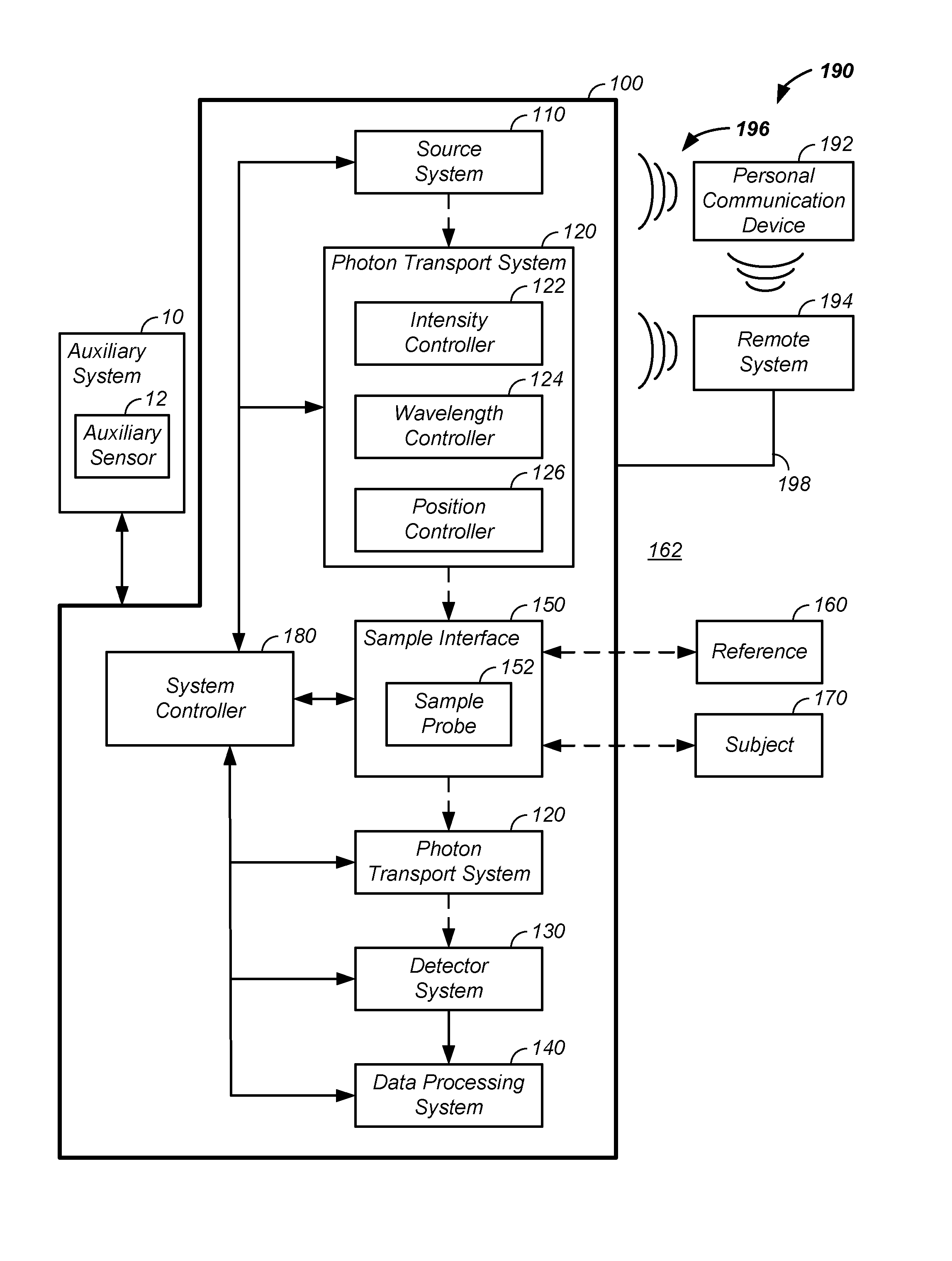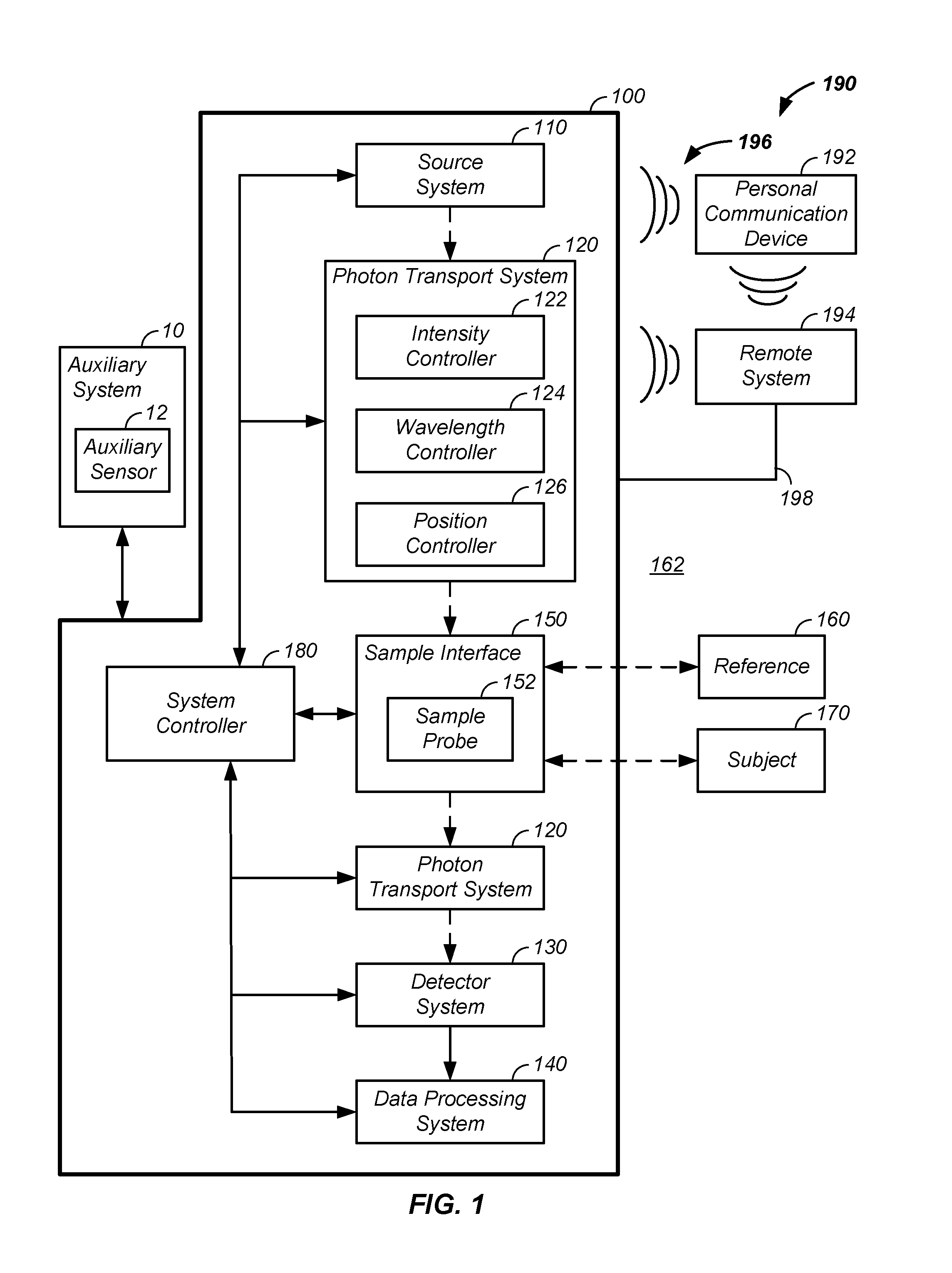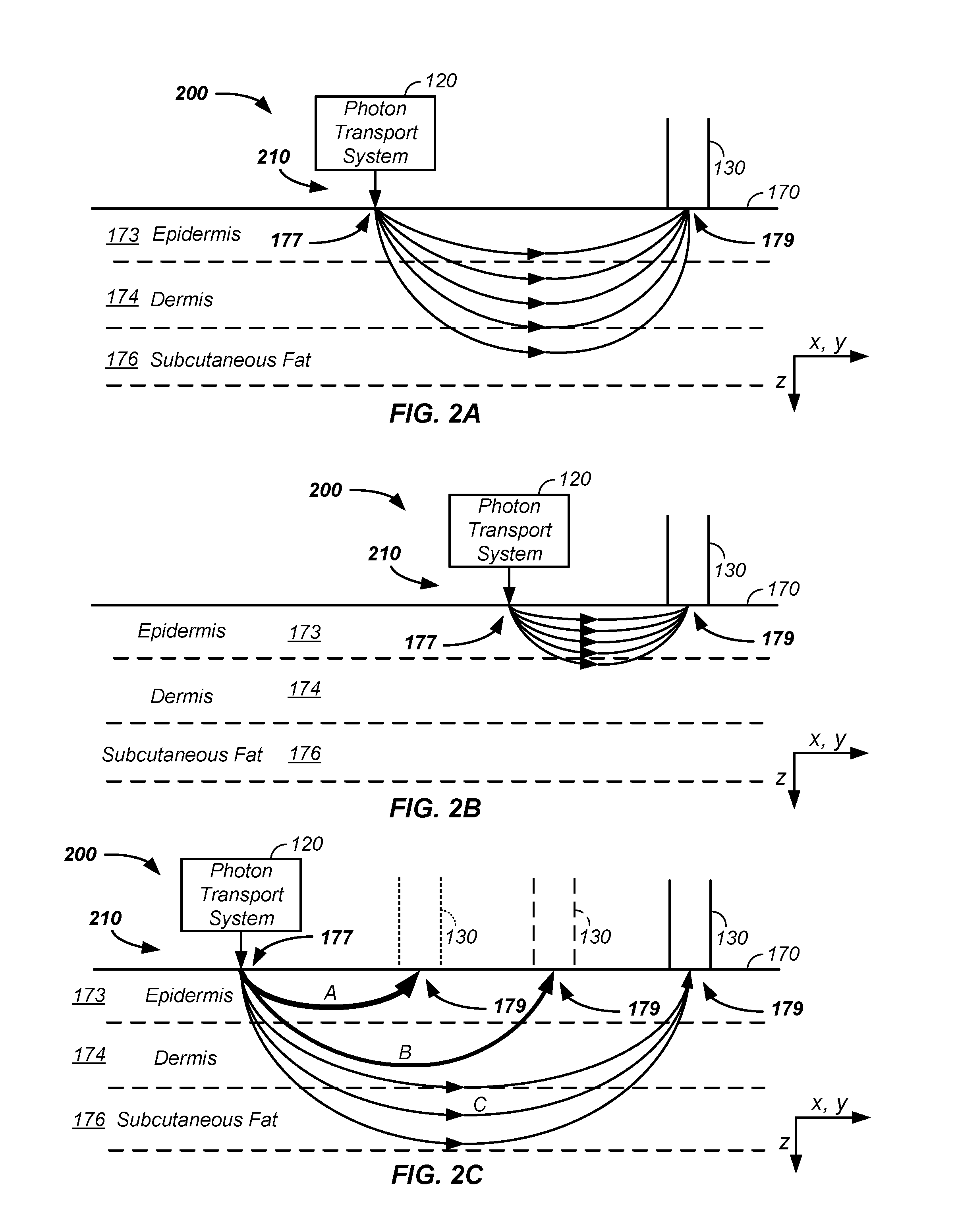Sample optical pathlength control using a noninvasive analyzer apparatus and method of use thereof
a non-invasive analyzer and optical pathlength technology, applied in the field of analyzers, can solve the problems of inapplicability of traditional chemical/physical separation techniques, inability to use homogenization, chemical derivation in sample preprocessing steps, poor accuracy and/or increased error of analysis of desired analyte properties, etc., to enhance the accuracy of analyte property estimation
- Summary
- Abstract
- Description
- Claims
- Application Information
AI Technical Summary
Benefits of technology
Problems solved by technology
Method used
Image
Examples
example vii
[0081]Any of the elements described herein are optionally combined with wavelength separation elements, such as a spatial or time based spectrometer.
Detector Array
[0082]In yet another embodiment, a noninvasive analyzer apparatus and method of use thereof using a plurality of two-dimensional near-infrared detector arrays is described. Using multiple redundant and / or overlapping illumination zone to detection zone distances has a number of uses, such as outlier determination, determination of effectiveness of optical coupling, and / or enhancing performance of the analyzer through data combination / selection. Again, several examples are initially provided to aid in description of the invention while details are provided, infra, for clarity of presentation.
Example I
[0083]In a first example, one or more two-dimensional detector arrays allow a plurality of closely spaced and / or matching radial distances between a mean position of an illumination zone and a mean position of a detection zone....
example iii
[0531]Referring now to FIG. 34C and FIG. 34D, a third example is provided to illustrate interference shadowing on elements of the representative two-row detector array, where an absorbance axis is used as a response signal. Generally, the example illustrates that any response function as a function of radial and lateral distance is used. In the illustrative example, the larger than expected absorbance at a second wavelength, λ2, indicates a second interference or interfering sample constituent at a radial distance of the fourth and fifth column and in a lateral position of the first row of the two-dimensional detector array.
example iv
[0532]Referring again to FIG. 34A and FIG. 34B, a fourth example is presented using a representative sample illumination zone from the source system 110 adjacent to a multiple row-multiple column detector array, representative of the two-dimensional detector array 134. As illustrated, the first sample interference 3450 is observed in detection responses from detectors positioned in the second row and third / fourth columns of the detector array as the first response difference 3420 and the second, shadowing, response difference 3430 is observed as described above, while additionally being observed in another lateral row, illustrated as a first row, of detection elements. Generally, it is observed that outlier responses extend outward from the spatial interference 3450 in an approximate teardrop pattern along an axis extending outward from the illumination zone through the spatial interference 3450.
PUM
 Login to View More
Login to View More Abstract
Description
Claims
Application Information
 Login to View More
Login to View More - R&D
- Intellectual Property
- Life Sciences
- Materials
- Tech Scout
- Unparalleled Data Quality
- Higher Quality Content
- 60% Fewer Hallucinations
Browse by: Latest US Patents, China's latest patents, Technical Efficacy Thesaurus, Application Domain, Technology Topic, Popular Technical Reports.
© 2025 PatSnap. All rights reserved.Legal|Privacy policy|Modern Slavery Act Transparency Statement|Sitemap|About US| Contact US: help@patsnap.com



